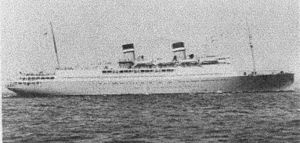
USS Arthur Middleton (AP-55/APA-25) was the lead ship of the Arthur Middleton-class attack transports and was in service with the United States Navy from 1942 to 1946. She was scrapped in 1973.

USS Comfort (AH-3) was a hospital ship for the United States Navy in World War I. She was the sister ship of USS Mercy (AH-4) but the two ships were not of a ship class. Comfort was known as SS Havana in passenger service for the Ward Line, and as USAT Havana in United States Army service before her Navy service. Her name was restored to Havana in 1927, and she was renamed SS Yucatán in 1935, and SS Agwileon in 1941. In World War II, she was known as USAT Agwileon and USAHS Shamrock in service for the United States Army.
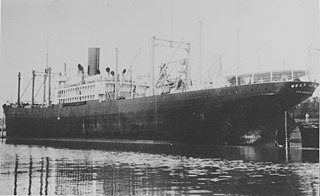
The USAT Meigs was a United States Army transport ship that was built in 1921 and sunk in Darwin Harbour in the first Japanese air raid against the Australia mainland on 19 February 1942.

USS General J. H. McRae (AP-149) was a General G. O. Squier-class transport ship built for the United States Maritime Commission during World War II. In 1946 she was transferred to the US Army and operated as USAT General J. H. McRae. On 1 March 1950 she was transferred to Military Sea Transportation Service and operated as USNS General J. H. McRae (T-AP-149). She was named for US Army Major General James H. McRae.
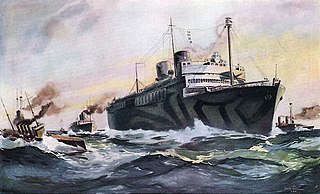
USS Siboney (ID-2999) was a ship transport for the United States Navy during World War I. She was the sister ship of USS Orizaba (ID-1536) but neither was part of a ship class. Launched as SS Oriente, she was soon renamed after Siboney, Cuba, a landing site of United States forces during the Spanish–American War. After her navy service ended, she was SS Siboney for the New York & Cuba Mail Steamship Co.. The ship was operated under charter by American Export Lines beginning in late 1940. During World War II she served the U.S. Army as transport USAT Siboney and as hospital ship USAHS Charles A. Stafford.
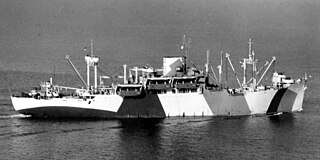
USS Thomas Jefferson (APA-30), serving from 1 May 1942 until 18 July 1955, was a transport and then reclassified on 1 February 1943 as a President Jackson-class attack transport. She was laid down under Maritime Commission contract as President Garfield on 5 February 1940 at Newport News, Virginia, by the Newport News Shipbuilding & Drydock Company for the American President Lines. The ship was launched on 20 November 1940, sponsored by Miss Eugenia Merrill. President Garfield was completed 26 March 1941 and acquired by the War Shipping Administration (WSA) 29 November 1941 with American President Lines, the WSA agent, operating the ship as a troop transport. On 1 May 1942 the United States Navy purchased the ship and commissioned her USS Thomas Jefferson on 31 August 1942.

SS Munargo was a commercial cargo and passenger ship built for the Munson Steamship Line by New York Shipbuilding Corp., Camden, New Jersey launched 17 September 1921. Munargo operated for the line in the New York-Bahamas-Cuba-Miami service passenger cargo trade. In June 1930 the United States and Mexican soccer teams took passage aboard Munargo from New York to Uruguay for the 1930 FIFA World Cup. The ship was acquired by the War Shipping Administration and immediately purchased by the War Department for service as a troop carrier during World War II. Shortly after acquisition the War Department transferred the ship to the U.S. Navy which commissioned the ship USS Munargo (AP-20). She operated in the Atlantic Ocean for the Navy until returned to the War Department in 1943 for conversion into the Hospital ship USAHS Thistle.

Great Northern was a passenger ship built at Philadelphia by William Cramp & Sons under supervision of the Great Northern Pacific Steam Ship Company for the Spokane, Portland and Seattle Railway Company, itself a joint venture of the Great Northern Railway and Northern Pacific Railway. Great Northern, along with sister ship Northern Pacific, were built to provide a passenger and freight link by sea between the northern transcontinental rail lines via the Spokane, Portland and Seattle Railway terminal at Astoria, Oregon and San Francisco beginning in spring of 1915.

Built in 1918, the SS Santa Teresa was originally a passenger liner. In World War I she was requisitioned by the U.S. Navy and served under the title USS Santa Teresa. She served as a commercial vessel between the wars, first under her original name, and later as the SS Kent. During World War II she served first with the U.S. Army as the USAT Ernest Hinds, named for Major General Ernest Hinds. She was later part of the Navy as USS Kent (AP-28). She spent the final part of the war as an Army hospital ship, once more under the name USAT Ernest Hinds.
Chateau Thierry was a troop transport that served with the US Army and US Navy. Originally built for service during the First World War, the ship arrived too late to see service in that war, but operated as an army transport, USAT Chateau Thierry, between the wars. With America's entry into World War II, the vessel was transferred to the US Navy and redesignated USS Chateau Thierry (AP-31). In 1943 she was transferred back to the Army and converted into a hospital ship, USAHS Chateau Thierry, in which role she was to serve for the remainder of the war.
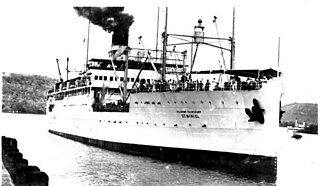
St. Mihiel was a troopship built for the United States Shipping Board by the American International Shipbuilding Corporation at Hog Island, Pennsylvania. The ship was operated from 1922 until mid-1940 as USAT St. Mihiel by the Army Transport Service. In July 1941 the ship was transferred to the Navy which commissioned her USS St. Mihiel with the hull number AP-32. In November 1943, she was transferred back to the Army and converted into the hospital ship, USAHS St. Mihiel.
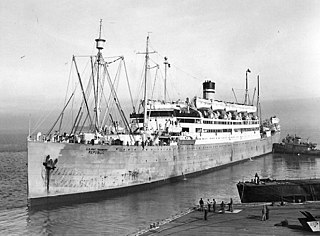
USS Republic (AP-33) was a troop transport that served with the US Navy during World War II. In World War I she served with the Navy as USS President Grant (ID-3014) before being turned over to the Army and named Republic. The ship was renamed the President Buchanan in 1921 before reverting to Republic in 1924.

USNS Fred C. Ainsworth (T-AP-181) was a troop transport that served with the United States Military Sea Transportation Service during the Korean War. Prior to her MSTS service, she served as US Army transport USAT Fred C. Ainsworth during World War II.
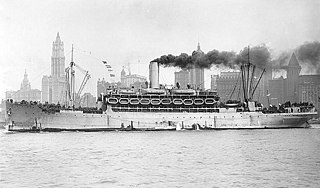
John L. Clem was built as the cargo and passenger liner Santa Ana for W. R. Grace and Company for service in Grace Line's South American service but was requisitioned before completion by the United States Shipping Board (USSB) in 1918 due to World War I. The ship was chartered back to Grace after completion until turned over to the United States Navy to be briefly commissioned as the troop transport USS Santa Ana (ID-2869) from 11 February 1919 to 21 July 1919.
USAT J. W. McAndrew was a Type C3-P&C troop ship for the United States Army during World War II.
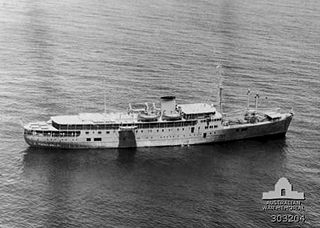
Don Isidro, delivered in 1939, was the second and larger of two Krupp built motor ships of De La Rama Steamship Company, Iloilo, Philippines in inter-island service. The ship under a time charter by the United States Army as a transport during the Japanese invasion of the Philippines. As defending forces became cut off from supply by the Japanese blockade Don Isidro was one of eight ships, only three of which were successful, known to make an attempt to run the blockade. In that attempt, under her captain Rafael J. Cisneros, Don Isidro became involved in the 19 February Japanese attack on Darwin, Australia where, though not in the port, she was strafed, bombed and left off Bathurst Island burning with all lifeboats destroyed. The captain attempted to make land when she grounded about three miles off Melville Island to which survivors swam. Of the sixty-seven crew and sixteen soldiers aboard eleven of the crew and one soldier were killed or missing. Survivors were rescued by HMAS Warrnambool, taken to Darwin, treated at the hospital and then awaited orders at the 147th Field Artillery camp.
SS Haiti was a passenger and freight ship built for the Colombian Mail Steamship Company built at Newport News Shipbuilding, Newport News, Virginia and delivered 15 December 1932. The ship was renamed briefly Puerto Rico in 1938 and Monterey in 1939 to operate for the New York and Cuba Mail Steamship Company until requisitioned with transfer of title to the War Shipping Administration (WSA) on 25 September 1942. The ship was then allocated to the U.S. Army for operation under a bareboat agreement as USAT Monterey. In 1943 the ship was assigned to the command at Trinidad to supply bases in Brazil and Ascension Island. After layup in the reserve fleet the ship was sold to Turkey.

The SS Clarksdale Victory was the 80th Victory ship built during World War II. She was launched by the California Shipbuilding Company on January 27, 1945, and completed on February 26, 1945. The ship’s United States Maritime Commission designation was VC2-S-AP3, hull number 80. She was built in just 86 days under the Emergency Shipbuilding program. SS Clarksdale Victory served in the Pacific Ocean during WW2. SS Clarksdale Victory was 80th of the new 10,500-ton class ship known as Victory ships. Victory ships were designed to replace the earlier Liberty Ships. Liberty ships were designed to be used just for WW2. Victory ships were designed to last longer and serve the US Navy after the war. The Victory ship differed from a Liberty ship in that they were: faster, longer and wider, taller, a thinner stack set farther toward the superstructure and had a long raised forecastle.
USAT Sicilien was the Danish motor vessel MS Sicilien built 1n 1938. After Germany occupied Denmark 9 April 1940 Danish ships were considered enemy ships by Britain and France and subject to seizure. Sicilien was one of forty that sought refuge in the neutral United States. On 30 March 1941 those ships were seized by the United States and requisitioned on 23 July 1941. The ship was then turned over to the United States Army for operation as a United States Army Transport.
